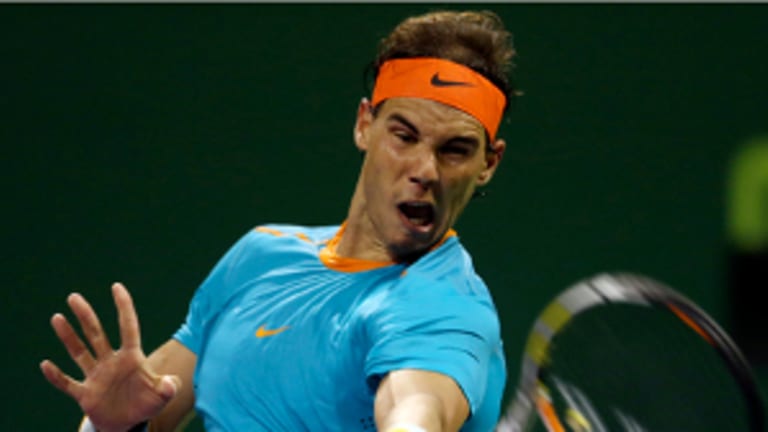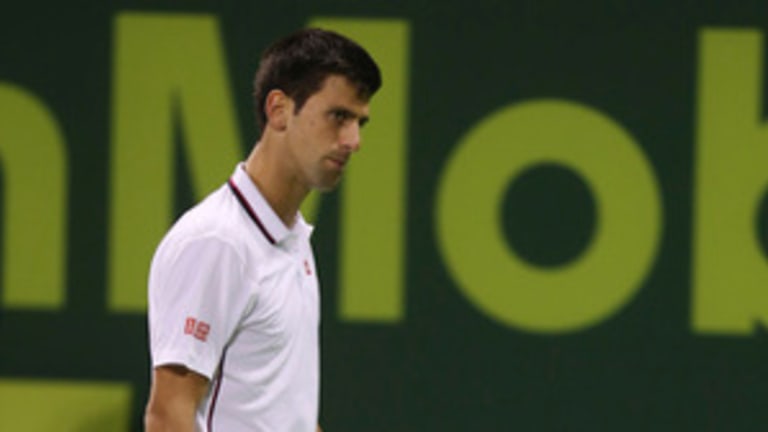Too Soon to Panic, a memoir of the game's amateur days by Gordon Forbes, is one of the best books that tennis has inspired. Which is appropriate, because the title still serves as a useful reminder to the sport’s most fanatical followers. When it comes to the fortunes of their favorite players, it’s always too soon to freak out. Novak Djokovic, Serena Williams, Rafael Nadal, Maria Sharapova, Roger Federer: They’ve had their ups and downs, slumps and injuries, chokes and brain cramps over the last decade, but with them, trouble never lasts for long. As 2015 begins, these elder statesmen and stateswomen remain comfortably lodged in the Top 5.
But how long can that fact keep their fan camps happy and calm? The season’s first week may already be making two of them a little twitchy. In Doha, Nadal and Djokovic each headed for the exit much earlier than expected. On Tuesday, Rafa lost his opening match to 34-year-old qualifier and world No. 127 Michael Berrer 1-6, 6-3, 6-4. On Thursday, Nole went out to an even older player, Ivo Karlovic, who will be 36 next month, 6-7(2), 7-6(6), 6-4. In both cases, the world’s No. 1 and 3 players faltered down the stretch, while their lower-ranked opponents rose to the occasion.
Nerves are bound to be riding a little higher on the Nadal side, and the headlines this week played on that anxiety.
RAFAEL NADAL SUFFERS SHOCK DEFEAT TO MICHAEL BERRER IN DOHA
World No. 3 made the worst possible start to the new season
That’s how the (non-tabloid) BBC News played Rafa's defeat, and it didn’t take long for the story to zero in on the most troubling aspect of the story.
“Nadal, 28, played only seven matches between Wimbledon and the end of last season as he struggled first with a wrist injury and then appendicitis.”

